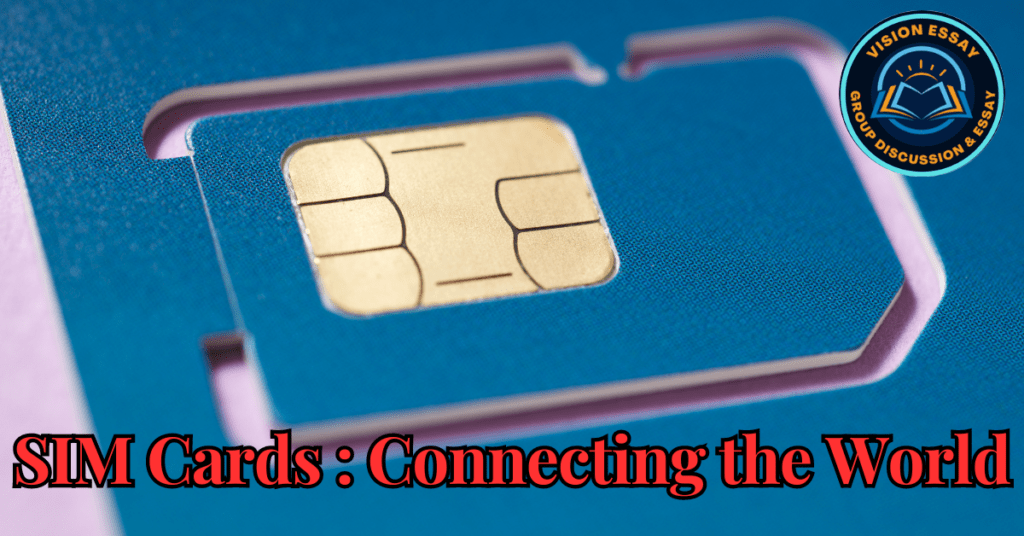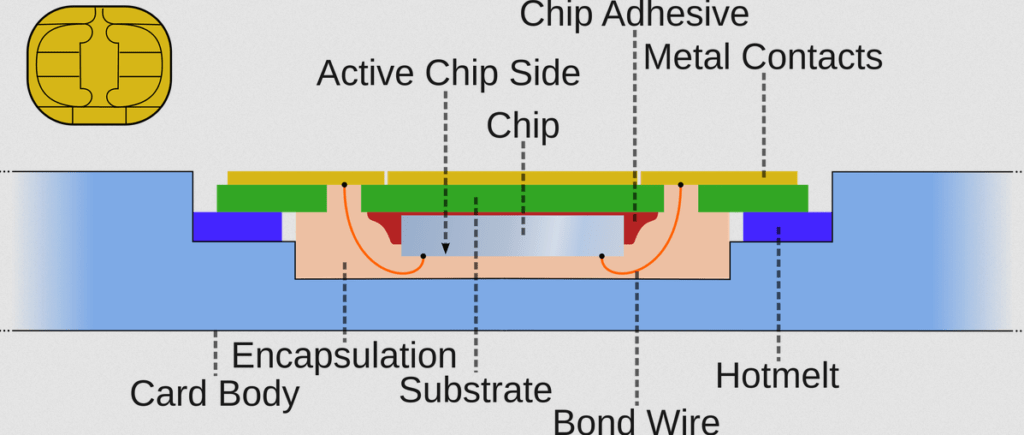The Evolution of SIM Cards: Connecting the World
Introduction
Nowadays, people use smartphones more than other electronic devices, to the point that a crucial part of them (Subscriber Identification Module) SIM Cards need a proper definition.
What is a SIM Card?
A tiny, portable chip called a SIM card (Subscriber Identity Module Card) is used in mobile devices to identify and verify users on a cellular network. It has all the necessary data, such as encryption keys, mobile network information, and a unique serial number. The SIM card allows voice, text, and data services to be accessed by connecting a phone or tablet to a particular mobile network. Text messages and contacts are also stored. When traveling, users can use local networks or swap SIM cards to switch providers. SIM cards are essential in the realm of mobile technology for safe and practical communication.
The Birth of SIM Cards
- SIM cards are a part of the smart card family, which dates back to the late 1960s. Moore’s law-driven technological developments resulted in substantial size and architectural modifications for these smart cards over time.
- The finding known as Moore’s law states that an integrated circuit’s (IC) transistor count doubles roughly every two years, leading to ever faster and more affordable computers.
- The original SIM cards held very little data and were around the size of a credit card. They developed into the smaller sizes we use now throughout time, with regular, micro, and nano SIMs being among the sizes that were created to fit various devices.
- The mobile business was completely transformed by these small chips, which made it simple to transfer phones and carriers without losing a user’s identification or contact details. SIM cards continue to be an essential part of
Role of SIM Cards in Network Access
- User Authentication: A secret authentication key (Ki) and a unique International Mobile Subscriber Identity (IMSI) are stored on the SIM card. The SIM card authenticates the user by giving the network these credentials whenever a mobile device tries to connect to it. By using this procedure, the network is kept safe from unauthorized users.
- Network Registration: The user’s home network and roaming agreements are stored on the SIM card. It makes it easier for the device to register on a particular mobile network, enabling Internet services, text messaging, and call-and-receive capabilities.
- Encryption: Encryption keys embedded in SIM cards provide network and mobile device communication security. The confidentiality and integrity of voice and data transfers are guaranteed by the encryption and decryption of data using these keys.
- Storing User Data: Contacts, text messages, and occasionally even a small amount of user-specific data can be stored on SIM cards. Users may easily transfer their data when switching devices because this data is still linked to the SIM card.
- Roaming: The SIM card assists in establishing a connection with a roaming partner network when users travel and connect to networks beyond the coverage of their home network. The data kept on the SIM card permits roaming agreements.
Information Storage in SIM Cards
- In addition to being used for network access, a SIM card may store several types of data. Along with the subscriber’s geographic area identification, the integrated circuit card identifier, and a list of preferred roaming networks, it also maintains the IMSI.
- Furthermore, SIM cards may keep the subscriber’s contacts and SMS messages in addition to holding the necessary emergency contact numbers, if there is enough room.
- For mobile communication on GSM-based networks to function and be secure, this little chip is essential.
How Does a SIM Card Work?
- SIM Card Standard
- SIM cards follow the international standard ISO/IEC 7816, which is governed by the International Electrotechnical Commission and the International Organization for Standardization.
- Pin Functions and Standards
- A SIM card’s metal contacts are divided into pins, each of which has a distinct function. The ISO/IEC 7816-2 standard defines these roles for every pin.
- Actually, there are a total of 15 pins, and each one designates a different SIM card function.
- SIM Card’s Network Role
- The SIM card key serves as authentication when a subscriber phones a recipient’s number, allowing the phone to communicate data across the network.
- Next, this data is sent to a phone exchange. The call is routed to the receiver if they are linked to the same exchange, confirming their identification.
What is an eSIM?
A digital SIM Cards that is integrated right into a device is called an eSIM (Embedded Subscriber Identity Module), doing away with the requirement for a traditional SIM card. Users may set it remotely to connect to a preferred mobile network, increasing its flexibility and convenience. Modern smartphones, tablets, and wearable technology frequently have eSIMs, which let customers add new cell plans or move providers without changing physical cards.
Also read: Unraveling DeepFake: Opportunities or Challenges,2023
What are Evolution of SIM Cards?
There have been several significant advances in the evolution of (Subscriber Identity Module) SIM cards:
- Full-Sized SIM: Early SIM cards had little data on them and were the size of credit cards.
- Mini-SIM: A more compact “mini-SIM” was developed in the 1990s and is still found in certain modern smartphones.
- Micro-SIM: Micro-SIMs gained popularity in 2010, most notably in Apple’s iPhone 4.
- Nano-SIM: In 2012, the tiniest nano-SIM was unveiled, suitable for contemporary smartphones.
- eSIM: Embedded SIMs, or eSIMs, have become more common in recent years. They are physically implanted into devices and enable remote provisioning.
What Are Benefits of eSIM Technology?
- Flexibility: Sim cards don’t need to be physically replaced when switching cell contracts and providers.
- Convenience: Device activation is made easier because physical cards are no longer required because eSIMs may be provided remotely.
- Space-saving: Because eSIMs are incorporated inside devices, more room is available for other parts or design features.
- Reduced e-Waste: eSIMs lessen the toll that producing and discarding real SIM cards takes on the environment.
- Global Roaming: When traveling, users may quickly switch between domestic and foreign providers.
Conclusion
The evolution of SIM cards has had a significant impact on how we interact and communicate in modern times. These small parts have come a long way, starting as credit card-sized chips and continuing through the development of compact nano-SIMs and cutting-edge eSIM technologies, all of which have greatly improved and simplified our mobile experience. In the age of mobile technology, their capacity to store vital data, facilitate network access, and securely identify users has made them important, guaranteeing efficient and secure global connectivity. The shift to eSIMs accelerates the evolution of SIM cards into the digital era by providing additional convenience and environmental advantages.
Frequently Asked Questions(FAQs)
What is the purpose of a SIM card?
A SIM card’s primary purpose is to connect a mobile device to a cellular network, enabling voice calls, text messages, and data access.
How have SIM cards evolved over the years?
SIM cards have evolved from credit card-sized chips to the current Nano SIMs and eSIMs, which are soldered onto devices.
What is an eSIM, and how does it work?
An eSIM, or embedded SIM, is a chip soldered onto a device’s motherboard. It can be programmed to work with different carriers, offering greater flexibility to users.
What is the environmental impact of SIM card production?
The mass production of SIM cards contributes to electronic waste, but manufacturers are adopting eco-friendly materials and processes.
Sources:
- https://www.thehindu.com/sci-tech/science/how-sim-cards-work-explained/article67453370.ece
- https://timesofindia.indiatimes.com/gadgets-news/explained-what-is-isim-technology-and-how-it-may-change-the-use-of-sim-cards/articleshow/89031978.cms
- https://trai.gov.in/sites/default/files/Airtel_20092022.pdf


Leave a Reply